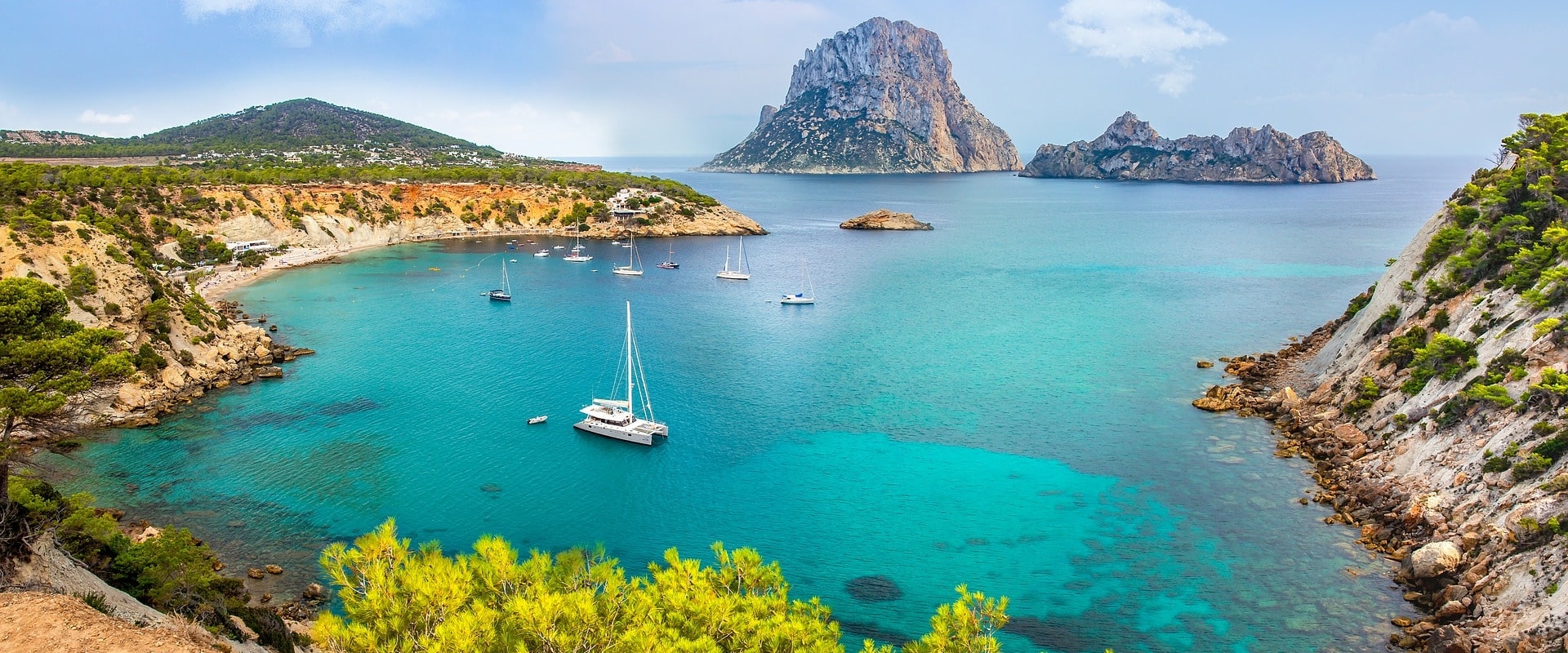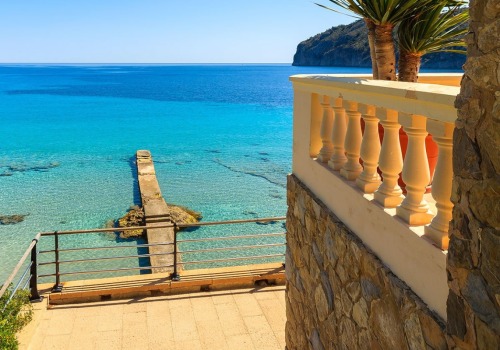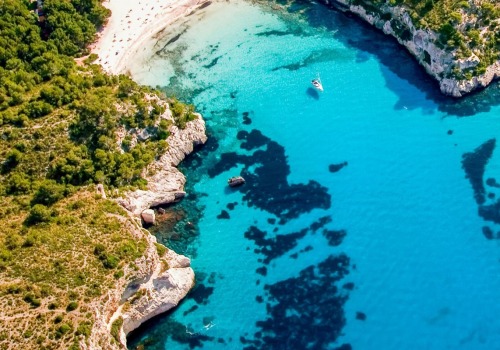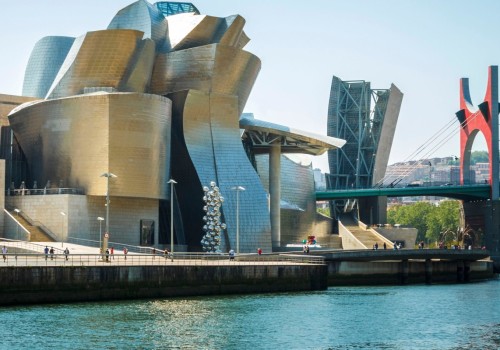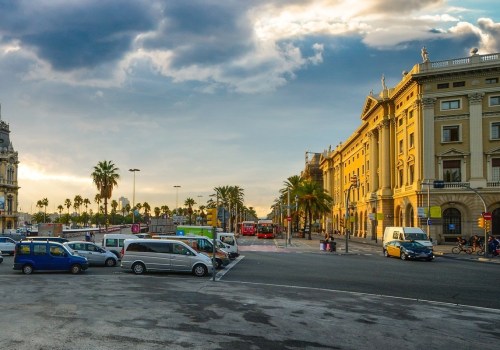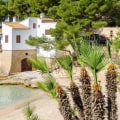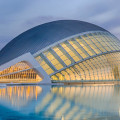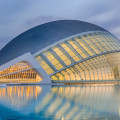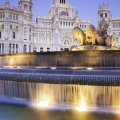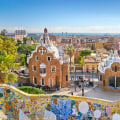Spain is famous for its quiet culture, delicious food and stunning landscapes. Tapas are almost as much a cultural activity as a style of eating. They started out as free bar snacks to help customers from siesta to traditional late dinner, but have since become a national and now international obsession. Each bar creates its own unique versions, although the classics are omelette, tomato on bread, shrimp with garlic, fries with hot sauce (patatas bravas), ham and cheese and chorizo.
You'll find that in some bars everyone throws their used chopsticks and napkins on the floor, which is actually considered a compliment the more there is on the floor, the better the tapas. Barely a week goes by in Spain without some kind of party to celebrate a religious patron saint or another. Parties take people to the streets to celebrate with food, wine and music. Certainly, there are darker festivals that have attracted the attention of the international crowd.
The Pamplona Bullring in San Fermi and Tomatina (the tomato throwing festival in Valencia) are just two. Las Fallas, a parade of giant puppets, is the Valencian version of Guy Fawkes, where effigies are burned after the parade, and the Tenerife Carnival is the second largest in the world after Rio de Janeiro. So before you go, be sure to check out the What's On guide so you don't miss one of the most important Spanish festivals while you were at your hotel by Netflix. Originally from Valencia, paella is a rice dish prepared with meat or seafood and will probably win the crown in terms of being the most famous food in Spain.
It derives from the old French word “paelle” for bread, which comes from the Latin word “patella”. It is a popular dish to have at large family gatherings in Spain, and the original Valencian version is with meat and vegetables. In coastal areas they replaced meat with shellfish. The mixed version of meat and seafood is a hybrid version and a big no-no for traditionalists.
With almost three million acres, it will surprise many that Spain has more vineyards by area than any other country. It is also the third largest wine producer, producing some of the most iconic and recognizable varieties, from deep red Riojas to light and sparkling cava. The fortified sherry wine, or Jerez, is also exclusive to Spain, and is only produced in the southern city of the same name. Apart from the huge quantities of wine that Spain produces, sangria is probably the most famous drink in the country.
It is considered that the name comes from the word for blood, blood, because of the intense red color of the drink. There have been many variations on the original recipe, but you will see that it is based on red wine, fruit juices, sparkling water and pieces of fruit. If you're in southern Spain and you see a drink called Zurra, it's sangria, only peach juice or nectarine is used instead of orange. If you ask someone “What dance is Spain known for? , they will tell you flamenco.
However, flamenco is more than just a dance. It is an art form declared by UNESCO based on the various folk music traditions of southern Spain. Dancers show emotions and tell stories through body movements and facial expressions. Spain is an impressive country in the Mediterranean, famous for many things.
From quirky events like La Tomatina to the crazy parties on Ibiza's beach, the only constant is extravagance and pure hedonism. If you're young, Ibiza's wild parties are definitely one of the things that Spain is famous for. The party island is known for having some of the best parties in Europe that last well into the night, with the most famous DJs in the world. Football is very close when it comes to the things that Spain is famous for.
The Clásico is probably the most famous derby in the world; the term was originally used to refer to the competitions that were held in the Spanish championship, but today it refers to all matches between Real Madrid FC Barcelona. Although there are disagreements about where exactly in Spain flamenco was created, there is no doubt that this is the country from which it originated. The term itself refers to a variety of Spanish musical styles that developed in the 19th century. Flamenco is an art form, consisting of three parts: singing (song), dancing (dancing) and playing (playing guitar).
Each of these parts is easily recognizable for what it is, and particularly the ballerinas with the red dresses with ruffles. Today's flamenco has changed a lot since its origin, mainly due to the influences of salsa, bossa nova and jazzy. But it's still a crucial part of Spanish culture and it's something you have to try if you're ever in the country. Throughout Spain you can find dance clubs and clubs where you can have a drink and try to dance flamenco with some of the best dancers in the country.
Delicious and spicy dishes are a hallmark of Spanish cuisine. And one of them is paella, a rice dish originally from Valencia. Spaniards see paella as a regional Valencian dish, but many non-nationals consider it to be the national dish of Spain. There are many types of paella.
The most outstanding is the Valencian paella, which is practically the original recipe and the basis of all other versions. The authentic recipe consists of white rice, green beans, meat (usually chicken, rabbit and duck), garrofó (lime beans), saffron and rosemary. Another very popular version of this dish is seafood paella, which is served with seafood instead of meat. All seafood is served in shells, which makes this type of paella easily recognizable.
This recipe is also considered authentic by Valencians, and is particularly popular on the Mediterranean coast. Tapas are very popular appetizers or snacks in Spanish cuisine. Can be served hot or cold, depending on the type of food. Tapas are traditionally Spanish and are served in bars, pubs and restaurants across the country.
They are popular with drinks; in fact, the original tapas are considered to be thin slices of meat or bread, used to cover glasses of sherry between sips. This was done in order to protect drinks from fruit flies. But today, you can eat tapas practically anywhere in the world, and not just as snacks. Tapas can be served as main courses when several different dishes are combined.
Sangria is another thing that is originally Spanish, but quite famous all over the world. Not much is known about the origins of this alcoholic drink: it is considered that the name comes from the Spanish word Sangre (blood), and that the term dates back to the 18th century. This would make sense, due to the dark red color of the drink. Sangria is a drink that consists of red wine, chopped fruit, sugar and, usually, orange juice or brandy.
Then the mixture is cooled for at least an hour and served chilled with pieces of fruit in each glass, and sometimes ice. It's delicious, but also quite strong. Siesta is part of the Spanish culture that goes hand in hand with paella, tapas and sangria. It's a quick nap of 15 to 30 minutes, usually after mealtime.
Siesta is particularly popular during hot summer days, and preferred times are from 2 to 5 p.m. It may be similar to the siesta in spelling, but the party has a completely different meaning. The festivals are festivals that are celebrated in Spain and that make thousands of people go out into the streets. There are festivals everywhere in the country practically at any time of the year, so you should be able to attend one while you're in Spain.
Pablo Picasso is another world-renowned Spanish artist. Not only is he considered one of the most influential and prolific artists of the 20th century, but he is also considered one of the founders of cubism. And he is also credited with the invention of constructed sculpture and the co-invention of collages. Bullfighting is a contest that originated in Spain, and is very popular even today.
Traditionally known as corrida, this event includes three matadors, each of which fights against two of the six bulls in total. The two bulls fight to the death, and they have to be at least four years old and weigh at least 460 kilos. I've already told you about sangria, the delicious drink made with wine and chopped fruit. Well, wine alone is another thing that Spain is famous for.
The countryside is full of vineyards, with Rioja, Ribera del Duero, Valdepeñas, Jerez de la Frontera, Rías Baixas and Catalonia being the most popular wine regions. Spain is the third largest producer of wine in the world, after Italy and France. It has more than 2.9 million acres of plantation, making it the most planted wine-producing nation. Construction of the Sagrada Familia continued over the years and was interrupted by the Spanish Civil War.
In fact, in 1936 the crypt where Gaudí was buried was burned, and all his original plans and plaster models were destroyed. It took 16 years to reassemble them, and construction did not resume until the 1950s. The square was originally built for the Ibero-American Exposition of 1929, a world fair attended by 18 countries, including Portugal, the United States, Brazil, Mexico and many others. The city of Seville has been preparing for this two-day event for 19 years.
It was originally designed and built as a small fortress in 889 AD, and later became a royal palace in the 14th century. In the 15th century, the palaces were partially modified to adapt to the Renaissance style, and in the 16th century, a completely new Renaissance palace was commissioned. And, of course, there is Playa d'en Bossa in Ibiza, the best party beach in probably all of Europe. It is full of bars and restaurants and tends to be very busy during the season.
Oh, and it's a white sand beach with a crystal blue sea, but that's not even important. I know you've heard of at least one of these stores, but maybe you didn't know that they were all owned by the same corporation. Well, they are: Inditex is popular all over the world, with around 8000 stores worldwide. The multimillion-dollar corporation is known for removing runway brands in a very short time.
In Zara, a garment can go from design to shelves in stores in just 15 days, which is practically the definition of fast fashion. And since Spaniards have both, a lot of energy (thanks to their regular naps) and warm blood that can hardly sit still, they invented parties. What are those? Fiesta may sound similar to siesta, but in reality it's quite the opposite. Fiesta is the Spanish word for a great festival.
You've probably heard of some of them, such as La Tomatina in Valencia or the running of the bulls in Pamplona, but there are many more. As each major area of Spain is a bit like a different country, they all have their own parties. Some of them last for days. I told you that Spaniards are warm-blooded.
Wait, don't you know what La Tomatina is? It's just the biggest food fight in the world (in which mainly tomatoes are used) and one of the main things that Spain is famous for. It takes place on the last Wednesday of August, in Buñol, near Valencia, and lasts a couple of hours. Two hours may not sound much, but they are enough to turn the whole city red. Seriously, in La Tomatina, Bunol looks like a horror version of Venice where the canals run scarlet.
The difference is that, unlike Venice, or any horror movie, the city is full of drunk and smiling people (and there are no serial killers). Not surprising, as La Tomatina festivities start about a week before the main event. Because how can I answer the question why is Spain famous sincerely and let go of Gaudí and Barcelona?. The capital of Catalonia is one of the largest cities in Europe and probably the most famous Spanish destination.
The main reason for this is Antoni Gaudí's genius. We started with the traditional Valencian specialty: paella. Although Spanish food is as diverse as the country itself, this extremely popular rice dish is often considered the national food of Spain. The authentic paella consists of rice, beans, meat, garrofó (lime beans), saffron and rosemary.
There is also a coastal version that replaces meat with seafood and a mixed version of meat and seafood. The name Paella derives from the French word paelle which means bread. If you ask my friends what Spain is famous for, the answer they are going to get is Jamon (maybe also Messi, but above all Jamon). This is because, on our first visit to the country, it seemed that we were running into this typical Spanish ham everywhere.
The original recipe is simple and delicious. It is based on red wine, soft drinks, fruit juices and pieces of fruit. It is a very complicated drink that can be wasted in a short time, so always consume with caution. Sangria goes very well with parties and even with naps (which if you're not at work, of course).
If you ask a large number of people what Spain is famous for, I'm pretty sure the most common answer will be the bullfight. And that's really sad if you ask me. If you ask any book lover what Spain is famous for, there are only two possible answers: Don Quijote or Miguel de Cervantez. Some form of bullfighting has been happening in Spain since Roman times, but more recently the sport has been going through an identity crisis.
You can find flamenco shows all over Spain, but Seville is widely considered to be one of the best places. Spain is known for its many internationally acclaimed football teams and players (you'd better not call it football while you're there). And it's the only thing that Spain is famous for and that you can do anywhere in the world and that will remain authentic. Spain is home to some of the most distinguished art museums on Earth: the Prado Museum, Reina Sophia, the Thyssen-Bornemisza Museum, the Picasso Museum, the Joan Miro Foundation and many more.
Although in Spain, as in many southern countries, there are many self-proclaimed Latin lovers, that does not mean that you are going to automatically flirt with all the places where you step on Spanish soil. The not so small, so beautiful and stabbing country of Spain is undoubtedly one of the best countries in the world thanks to its integral aspect of good food, people, art, culture and architecture. Undoubtedly the most famous architect in Spain, Gaudí's distinctive style gave rise to the Catalan modernist movement. Antoni Gaudí is a famous Spanish architect, known for his unique works, most of which are located in Barcelona.
Although the game was invented in England and the most famous league is the English Premier League, the two most abandoned teams in the world are the Spaniards: Real Madrid and Barcelona. Especially in winter, the difference between British gray days and the sunny hours of Spain is strongly noticeable. In fact, it's so popular in Spain that everything shuts down during the early afternoon, so everyone has enough time for a long nap before returning to work. Later, Spain was ruled by the Germanic vandals and then by the Visigoths, who surrendered to the Moors in the 8th century.
. .
